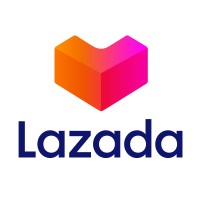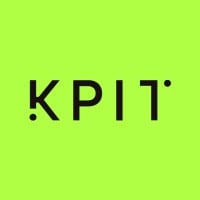Company Details
carbonite
226
22,077
5112
carbonite.com
0
CAR_2769997
In-progress

Carbonite Company CyberSecurity Posture
carbonite.comCarbonite provides a robust Data Protection Platform for businesses, including backup, disaster recovery, high availability and workload migration technology. The Carbonite Data Protection Platform supports any size business, in locations around the world with secure and scalable global cloud infrastructure. To learn more visit www.Carbonite.com.
Company Details
carbonite
226
22,077
5112
carbonite.com
0
CAR_2769997
In-progress
Between 700 and 749

 Carbonite Global Score (TPRM)
Carbonite Global Score (TPRM)XXXX

Description: Carbonite, a provider of online computer and server backup services suffered a password reuse attack in which some users’ credentials, obtained elsewhere, were used to obtain user data. The company notified its more than 1.5 million individual and small business customers and forced them to password reset. The attack was a result of a third-party attacker using compromised email addresses and passwords obtained from other companies that were previously attacked.
Description: Over half of Indian enterprises surveyed by OpenText faced **ransomware attacks** in the past year, with **71% reporting AI-driven phishing or deepfake attempts**, marking India as a highly targeted region. **70% of affected organizations paid ransoms** to regain data access—one of the highest global rates—yet only **12% fully recovered encrypted/stolen data**, exposing a critical gap between perceived resilience and actual recovery capabilities. Attacks increasingly exploited **third-party vendors or supply chains**, with **63% of organizations impacted by breaches via managed service providers**. Despite proactive measures like **cloud security (68%), network protection (60%), and backup technologies (58%)**, heavy reliance on external ecosystems amplified cascading risks. The financial and operational strain was compounded by **AI-enabled threats (deepfakes, voice/video spoofing)**, with **95% of firms allowing generative AI tools** but only **50% having formal AI governance policies**. Ransomware is now a **board-level priority (84% of execs rank it a top-3 risk)**, yet recovery tests (76% conduct multi-annual drills) and employee training (80% participation) have not prevented persistent data loss and operational disruption.


No incidents recorded for Carbonite in 2025.
No incidents recorded for Carbonite in 2025.
No incidents recorded for Carbonite in 2025.
Carbonite cyber incidents detection timeline including parent company and subsidiaries

Carbonite provides a robust Data Protection Platform for businesses, including backup, disaster recovery, high availability and workload migration technology. The Carbonite Data Protection Platform supports any size business, in locations around the world with secure and scalable global cloud infrastructure. To learn more visit www.Carbonite.com.


About Lazada Group Founded in 2012, Lazada Group is the leading eCommerce platform in Southeast Asia. We are accelerating progress in Indonesia, Malaysia, the Philippines, Singapore, Thailand and Vietnam through commerce and technology. With the largest logistics and payments networks in the regio
Catalyzing the era of pervasive intelligence, Synopsys delivers trusted and comprehensive silicon to systems design solutions, from electronic design automation to silicon IP and system verification and validation. We partner closely with semiconductor and systems customers across a wide range of

Rakuten Group, Inc. (TSE: 4755) is a global technology leader in services that empower individuals, communities, businesses and society. Founded in Tokyo in 1997 as an online marketplace, Rakuten has expanded to offer services in e-commerce, fintech, digital content and communications to 2 billion m
VMware by Broadcom delivers software that unifies and streamlines hybrid cloud environments for the world’s most complex organizations. By combining public-cloud scale and agility with private-cloud security and performance, we empower our customers to modernize, optimize and protect their apps an

🌍Alibaba Group is on a mission to make it easy to do business anywhere! Guided by our passion and imagination, we’re leading the way in AI, cloud computing and e-commerce. We aim to build the future infrastructure of commerce, and we aspire to be a good company that lasts for 102 years.

Zoho offers beautifully smart software to help you grow your business. With over 100 million users worldwide, Zoho's 55+ products aid your sales and marketing, support and collaboration, finance, and recruitment needs—letting you focus only on your business. Zoho respects user privacy and does not h
A problem isn't truly solved until it's solved for all. Googlers build products that help create opportunities for everyone, whether down the street or across the globe. Bring your insight, imagination and a healthy disregard for the impossible. Bring everything that makes you unique. Together, we c

At Agoda, we bridge the world through travel. We aim to make it easy and rewarding for more travelers to explore and experience the amazing world we live in. We do so by enabling more people to see the world for less – with our best-value deals across our 4,700,000+ hotels and holiday properties, 13

About KPIT KPIT is reimagining the future of mobility, forging ahead with group companies and partners to shape a world that is cleaner, smarter, and safer. With over 25 years of specialized expertise in Mobility, KPIT is accelerating the transformation towards Software and AI-Defined Vehicles thr
.png)
Click ticker symbols for real-time stock quotes & charts, financial news, and company comparisons from Yahoo! Finance.
OpenText plans to round out its comprehensive cybersecurity platform with the Dec. 9 debut of managed detection and response (MDR), based on...
Prajakt Deolasee, Chief Technology Officer, Turtlemint, highlights that embedded insurance has revolutionised his company's approach to...
OpenText Cybersecurity has introduced Carbonite Cloud-to-Cloud Backup in India. This would enable organisations to protect business-critical data stored on...
IBM on Wednesday announced the appointment of Mohamad Ali as senior vice president of its consulting business, effective July 1.
Cloud computing refers to when computing services and storage are accessed over the internet instead of through hardware like a USB drive or disk.
Use one of 7 Carbonite Promo Codes to lower the price of personal and professional cloud storage plans.
Carbonite, the cloud-based data protection provider, said Thursday that it plans to acquire cybersecurity provider Webroot for nearly $619 million.
Connect with OpenText at Google Cloud Next, August 29-32 in San Francisco and discover the latest OpenText and Google Cloud partner...

Explore insights on cybersecurity incidents, risk posture, and Rankiteo's assessments.
The official website of Carbonite is http://www.carbonite.com.
According to Rankiteo, Carbonite’s AI-generated cybersecurity score is 746, reflecting their Moderate security posture.
According to Rankiteo, Carbonite currently holds 0 security badges, indicating that no recognized compliance certifications are currently verified for the organization.
According to Rankiteo, Carbonite is not certified under SOC 2 Type 1.
According to Rankiteo, Carbonite does not hold a SOC 2 Type 2 certification.
According to Rankiteo, Carbonite is not listed as GDPR compliant.
According to Rankiteo, Carbonite does not currently maintain PCI DSS compliance.
According to Rankiteo, Carbonite is not compliant with HIPAA regulations.
According to Rankiteo,Carbonite is not certified under ISO 27001, indicating the absence of a formally recognized information security management framework.
Carbonite operates primarily in the Software Development industry.
Carbonite employs approximately 226 people worldwide.
Carbonite presently has no subsidiaries across any sectors.
Carbonite’s official LinkedIn profile has approximately 22,077 followers.
Carbonite is classified under the NAICS code 5112, which corresponds to Software Publishers.
Yes, Carbonite has an official profile on Crunchbase, which can be accessed here: https://www.crunchbase.com/organization/carbonite.
Yes, Carbonite maintains an official LinkedIn profile, which is actively utilized for branding and talent engagement, which can be accessed here: https://www.linkedin.com/company/carbonite.
As of November 27, 2025, Rankiteo reports that Carbonite has experienced 2 cybersecurity incidents.
Carbonite has an estimated 26,613 peer or competitor companies worldwide.
Incident Types: The types of cybersecurity incidents that have occurred include Ransomware and Breach.
Detection and Response: The company detects and responds to cybersecurity incidents through an containment measures with forced password reset, and communication strategy with customer notification, and and third party assistance with managed service providers (83% of organizations), third party assistance with cybersecurity assessments of software suppliers (91%), and remediation measures with cloud security enhancements (68% priority), remediation measures with network protection (60% priority), remediation measures with backup technologies (58% priority), and recovery measures with ransomware recovery plan testing (76% test multiple times/year), recovery measures with security awareness training (80% conduct regularly)..
Title: Password Reuse Attack on Carbonite
Description: Carbonite, a provider of online computer and server backup services, suffered a password reuse attack in which some users’ credentials, obtained elsewhere, were used to obtain user data. The company notified its more than 1.5 million individual and small business customers and forced them to password reset. The attack was a result of a third-party attacker using compromised email addresses and passwords obtained from other companies that were previously attacked.
Type: Password Reuse Attack
Attack Vector: Compromised Credentials
Vulnerability Exploited: Password Reuse
Threat Actor: Third-party attacker
Motivation: Data Theft
Title: Ransomware and AI-Driven Cyber Threats Targeting Indian Enterprises (2023-2024)
Description: OpenText's fourth annual Global Ransomware Survey reveals that over 50% of Indian enterprises faced ransomware attacks in the past year, with 71% reporting a surge in AI-driven phishing or deepfake attempts. Nearly 70% of affected organizations paid ransoms, yet only 12% fully recovered encrypted or stolen data. The report highlights gaps in AI governance, third-party risks, and the escalating complexity of attacks, including supply chain breaches. Indian organizations are prioritizing cloud security, network protection, and backup technologies for 2026, with 84% of executive teams now treating ransomware as a top-three business risk.
Type: ransomware
Attack Vector: AI-driven phishingdeepfake (voice/video spoofing)third-party service providerssoftware supply chain
Vulnerability Exploited: insufficient AI governancethird-party ecosystem dependencieslack of formal AI-use/data privacy policies
Motivation: financial gain (ransom payments)data theftdisruption of operations
Common Attack Types: The most common types of attacks the company has faced is Breach.
Identification of Attack Vectors: The company identifies the attack vectors used in incidents through third-party service providerssoftware supply chainAI-driven phishing/deepfake attacks.

Data Compromised: User Data
Commonly Compromised Data Types: The types of data most commonly compromised in incidents are User Credentials, Personally Identifiable Information (Likely), Corporate Data, Financial Data (Possible) and .

Entity Name: Carbonite
Entity Type: Service Provider
Industry: Technology
Size: More than 1.5 million customers
Customers Affected: 1.5 million

Entity Name: Indian Enterprises (Survey Respondents)
Entity Type: private sector, public sector (if applicable)
Industry: technology, financial services, manufacturing, others (unspecified)
Location: India

Containment Measures: Forced password reset
Communication Strategy: Customer notification

Incident Response Plan Activated: True
Third Party Assistance: Managed Service Providers (83% Of Organizations), Cybersecurity Assessments Of Software Suppliers (91%).
Remediation Measures: cloud security enhancements (68% priority)network protection (60% priority)backup technologies (58% priority)
Recovery Measures: ransomware recovery plan testing (76% test multiple times/year)security awareness training (80% conduct regularly)
Third-Party Assistance: The company involves third-party assistance in incident response through managed service providers (83% of organizations), cybersecurity assessments of software suppliers (91%), .

Type of Data Compromised: User Credentials

Type of Data Compromised: Personally identifiable information (likely), Corporate data, Financial data (possible)
Sensitivity of Data: high (includes potential PII and corporate secrets)
Data Encryption: True
Prevention of Data Exfiltration: The company takes the following measures to prevent data exfiltration: cloud security enhancements (68% priority), network protection (60% priority), backup technologies (58% priority), .
Handling of PII Incidents: The company handles incidents involving personally identifiable information (PII) through by forced password reset.

Ransom Paid: 70% of affected organizations
Data Encryption: True
Data Exfiltration: True
Data Recovery from Ransomware: The company recovers data encrypted by ransomware through ransomware recovery plan testing (76% test multiple times/year), security awareness training (80% conduct regularly), .

Lessons Learned: AI adoption outpaces governance: 95% allow generative AI tools, but only ~50% have formal AI-use/data privacy policies., Third-party risks are critical: 66% of organizations impacted by vendor/managed services breaches in the past year., Recovery confidence is misplaced: 98.6% express confidence in recovery, but only 12% fully recover data post-attack., Board-level engagement is rising: 84% of Indian executives now rank ransomware as a top-three business risk (vs. 71% globally)., Collaboration is key: Effectiveness depends on shared responsibility across organizations, partners, and technology providers.

Recommendations: Implement formal AI governance frameworks to align productivity gains with security/privacy risks., Strengthen third-party risk management, including rigorous cybersecurity assessments of suppliers and managed service providers., Enhance ransomware recovery testing frequency and realism to close the gap between perceived and actual resilience., Expand security awareness training to include AI-specific threats (e.g., deepfakes, generative AI misuse)., Prioritize investments in cloud security, network protection, and immutable backup solutions., Foster cross-ecosystem collaboration to address cascading risks in supply chains and shared infrastructure.Implement formal AI governance frameworks to align productivity gains with security/privacy risks., Strengthen third-party risk management, including rigorous cybersecurity assessments of suppliers and managed service providers., Enhance ransomware recovery testing frequency and realism to close the gap between perceived and actual resilience., Expand security awareness training to include AI-specific threats (e.g., deepfakes, generative AI misuse)., Prioritize investments in cloud security, network protection, and immutable backup solutions., Foster cross-ecosystem collaboration to address cascading risks in supply chains and shared infrastructure.Implement formal AI governance frameworks to align productivity gains with security/privacy risks., Strengthen third-party risk management, including rigorous cybersecurity assessments of suppliers and managed service providers., Enhance ransomware recovery testing frequency and realism to close the gap between perceived and actual resilience., Expand security awareness training to include AI-specific threats (e.g., deepfakes, generative AI misuse)., Prioritize investments in cloud security, network protection, and immutable backup solutions., Foster cross-ecosystem collaboration to address cascading risks in supply chains and shared infrastructure.Implement formal AI governance frameworks to align productivity gains with security/privacy risks., Strengthen third-party risk management, including rigorous cybersecurity assessments of suppliers and managed service providers., Enhance ransomware recovery testing frequency and realism to close the gap between perceived and actual resilience., Expand security awareness training to include AI-specific threats (e.g., deepfakes, generative AI misuse)., Prioritize investments in cloud security, network protection, and immutable backup solutions., Foster cross-ecosystem collaboration to address cascading risks in supply chains and shared infrastructure.Implement formal AI governance frameworks to align productivity gains with security/privacy risks., Strengthen third-party risk management, including rigorous cybersecurity assessments of suppliers and managed service providers., Enhance ransomware recovery testing frequency and realism to close the gap between perceived and actual resilience., Expand security awareness training to include AI-specific threats (e.g., deepfakes, generative AI misuse)., Prioritize investments in cloud security, network protection, and immutable backup solutions., Foster cross-ecosystem collaboration to address cascading risks in supply chains and shared infrastructure.Implement formal AI governance frameworks to align productivity gains with security/privacy risks., Strengthen third-party risk management, including rigorous cybersecurity assessments of suppliers and managed service providers., Enhance ransomware recovery testing frequency and realism to close the gap between perceived and actual resilience., Expand security awareness training to include AI-specific threats (e.g., deepfakes, generative AI misuse)., Prioritize investments in cloud security, network protection, and immutable backup solutions., Foster cross-ecosystem collaboration to address cascading risks in supply chains and shared infrastructure.
Key Lessons Learned: The key lessons learned from past incidents are AI adoption outpaces governance: 95% allow generative AI tools, but only ~50% have formal AI-use/data privacy policies.,Third-party risks are critical: 66% of organizations impacted by vendor/managed services breaches in the past year.,Recovery confidence is misplaced: 98.6% express confidence in recovery, but only 12% fully recover data post-attack.,Board-level engagement is rising: 84% of Indian executives now rank ransomware as a top-three business risk (vs. 71% globally).,Collaboration is key: Effectiveness depends on shared responsibility across organizations, partners, and technology providers.

Source: OpenText Global Ransomware Survey (4th Annual)

Source: ETCISO Article on OpenText Survey Findings
Additional Resources: Stakeholders can find additional resources on cybersecurity best practices at and Source: OpenText Global Ransomware Survey (4th Annual), and Source: ETCISO Article on OpenText Survey Findings.

Investigation Status: Survey-based findings (no specific incident investigation detailed)
Communication of Investigation Status: The company communicates the status of incident investigations to stakeholders through Customer notification.

Stakeholder Advisories: Board-Level Engagement: 84% Of Indian Executives Treat Ransomware As A Top-Three Business Risk., Third-Party Advisories: 91% Conduct Formal Cybersecurity Assessments Of Software Suppliers..
Advisories Provided: The company provides the following advisories to stakeholders and customers following an incident: were Board-Level Engagement: 84% Of Indian Executives Treat Ransomware As A Top-Three Business Risk. and Third-Party Advisories: 91% Conduct Formal Cybersecurity Assessments Of Software Suppliers..

Entry Point: Third-Party Service Providers, Software Supply Chain, Ai-Driven Phishing/Deepfake Attacks,
High Value Targets: Corporate Data, Financial Systems, Customer Pii,
Data Sold on Dark Web: Corporate Data, Financial Systems, Customer Pii,

Root Causes: Password Reuse
Corrective Actions: Forced password reset

Root Causes: Rapid Ai Adoption Without Commensurate Governance (E.G., Lack Of Formal Ai-Use Policies)., Over-Reliance On Third-Party Ecosystems With Inadequate Security Oversight., Insufficient Testing Of Ransomware Recovery Plans (Gap Between Confidence And Actual Recovery Rates)., Expanding Attack Surface Due To Hybrid/Ai-Powered Environments.,
Corrective Actions: Accelerate Implementation Of Ai Governance Frameworks And Data Privacy Policies., Enhance Third-Party Risk Management Programs, Including Continuous Monitoring Of Suppliers., Increase Frequency And Rigor Of Ransomware Recovery Simulations., Invest In Advanced Threat Detection For Ai-Driven Attacks (E.G., Deepfake Identification Tools)., Promote Cross-Industry Collaboration To Address Systemic Vulnerabilities In Supply Chains.,
Post-Incident Analysis Process: The company's process for conducting post-incident analysis is described as Managed Service Providers (83% Of Organizations), Cybersecurity Assessments Of Software Suppliers (91%), .
Corrective Actions Taken: The company has taken the following corrective actions based on post-incident analysis: Forced password reset, Accelerate Implementation Of Ai Governance Frameworks And Data Privacy Policies., Enhance Third-Party Risk Management Programs, Including Continuous Monitoring Of Suppliers., Increase Frequency And Rigor Of Ransomware Recovery Simulations., Invest In Advanced Threat Detection For Ai-Driven Attacks (E.G., Deepfake Identification Tools)., Promote Cross-Industry Collaboration To Address Systemic Vulnerabilities In Supply Chains., .
Ransom Payment History: The company has Paid ransoms in the past.
Last Attacking Group: The attacking group in the last incident was an Third-party attacker.
Most Significant Data Compromised: The most significant data compromised in an incident were User Data and .
Third-Party Assistance in Most Recent Incident: The third-party assistance involved in the most recent incident was managed service providers (83% of organizations), cybersecurity assessments of software suppliers (91%), .
Containment Measures in Most Recent Incident: The containment measures taken in the most recent incident was Forced password reset.
Most Sensitive Data Compromised: The most sensitive data compromised in a breach was User Data.
Highest Ransom Paid: The highest ransom paid in a ransomware incident was 70% of affected organizations.
Most Significant Lesson Learned: The most significant lesson learned from past incidents was Collaboration is key: Effectiveness depends on shared responsibility across organizations, partners, and technology providers.
Most Significant Recommendation Implemented: The most significant recommendation implemented to improve cybersecurity was Enhance ransomware recovery testing frequency and realism to close the gap between perceived and actual resilience., Strengthen third-party risk management, including rigorous cybersecurity assessments of suppliers and managed service providers., Implement formal AI governance frameworks to align productivity gains with security/privacy risks., Prioritize investments in cloud security, network protection, and immutable backup solutions., Expand security awareness training to include AI-specific threats (e.g., deepfakes, generative AI misuse). and Foster cross-ecosystem collaboration to address cascading risks in supply chains and shared infrastructure..
Most Recent Source: The most recent source of information about an incident are OpenText Global Ransomware Survey (4th Annual) and ETCISO Article on OpenText Survey Findings.
Current Status of Most Recent Investigation: The current status of the most recent investigation is Survey-based findings (no specific incident investigation detailed).
Most Recent Stakeholder Advisory: The most recent stakeholder advisory issued was Board-level engagement: 84% of Indian executives treat ransomware as a top-three business risk., Third-party advisories: 91% conduct formal cybersecurity assessments of software suppliers., .
Most Significant Root Cause: The most significant root cause identified in post-incident analysis was Password Reuse, Rapid AI adoption without commensurate governance (e.g., lack of formal AI-use policies).Over-reliance on third-party ecosystems with inadequate security oversight.Insufficient testing of ransomware recovery plans (gap between confidence and actual recovery rates).Expanding attack surface due to hybrid/AI-powered environments..
Most Significant Corrective Action: The most significant corrective action taken based on post-incident analysis was Forced password reset, Accelerate implementation of AI governance frameworks and data privacy policies.Enhance third-party risk management programs, including continuous monitoring of suppliers.Increase frequency and rigor of ransomware recovery simulations.Invest in advanced threat detection for AI-driven attacks (e.g., deepfake identification tools).Promote cross-industry collaboration to address systemic vulnerabilities in supply chains..
.png)
Angular is a development platform for building mobile and desktop web applications using TypeScript/JavaScript and other languages. Prior to versions 19.2.16, 20.3.14, and 21.0.1, there is a XSRF token leakage via protocol-relative URLs in angular HTTP clients. The vulnerability is a Credential Leak by App Logic that leads to the unauthorized disclosure of the Cross-Site Request Forgery (XSRF) token to an attacker-controlled domain. Angular's HttpClient has a built-in XSRF protection mechanism that works by checking if a request URL starts with a protocol (http:// or https://) to determine if it is cross-origin. If the URL starts with protocol-relative URL (//), it is incorrectly treated as a same-origin request, and the XSRF token is automatically added to the X-XSRF-TOKEN header. This issue has been patched in versions 19.2.16, 20.3.14, and 21.0.1. A workaround for this issue involves avoiding using protocol-relative URLs (URLs starting with //) in HttpClient requests. All backend communication URLs should be hardcoded as relative paths (starting with a single /) or fully qualified, trusted absolute URLs.
Forge (also called `node-forge`) is a native implementation of Transport Layer Security in JavaScript. An Uncontrolled Recursion vulnerability in node-forge versions 1.3.1 and below enables remote, unauthenticated attackers to craft deep ASN.1 structures that trigger unbounded recursive parsing. This leads to a Denial-of-Service (DoS) via stack exhaustion when parsing untrusted DER inputs. This issue has been patched in version 1.3.2.
Forge (also called `node-forge`) is a native implementation of Transport Layer Security in JavaScript. An Integer Overflow vulnerability in node-forge versions 1.3.1 and below enables remote, unauthenticated attackers to craft ASN.1 structures containing OIDs with oversized arcs. These arcs may be decoded as smaller, trusted OIDs due to 32-bit bitwise truncation, enabling the bypass of downstream OID-based security decisions. This issue has been patched in version 1.3.2.
Suricata is a network IDS, IPS and NSM engine developed by the OISF (Open Information Security Foundation) and the Suricata community. Prior to versions 7.0.13 and 8.0.2, working with large buffers in Lua scripts can lead to a stack overflow. Users of Lua rules and output scripts may be affected when working with large buffers. This includes a rule passing a large buffer to a Lua script. This issue has been patched in versions 7.0.13 and 8.0.2. A workaround for this issue involves disabling Lua rules and output scripts, or making sure limits, such as stream.depth.reassembly and HTTP response body limits (response-body-limit), are set to less than half the stack size.
Suricata is a network IDS, IPS and NSM engine developed by the OISF (Open Information Security Foundation) and the Suricata community. In versions from 8.0.0 to before 8.0.2, a NULL dereference can occur when the entropy keyword is used in conjunction with base64_data. This issue has been patched in version 8.0.2. A workaround involves disabling rules that use entropy in conjunction with base64_data.

Get company history
















Every week, Rankiteo analyzes billions of signals to give organizations a sharper, faster view of emerging risks. With deeper, more actionable intelligence at their fingertips, security teams can outpace threat actors, respond instantly to Zero-Day attacks, and dramatically shrink their risk exposure window.
Identify exposed access points, detect misconfigured SSL certificates, and uncover vulnerabilities across the network infrastructure.
Gain visibility into the software components used within an organization to detect vulnerabilities, manage risk, and ensure supply chain security.
Monitor and manage all IT assets and their configurations to ensure accurate, real-time visibility across the company's technology environment.
Leverage real-time insights on active threats, malware campaigns, and emerging vulnerabilities to proactively defend against evolving cyberattacks.




